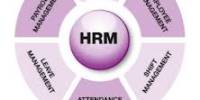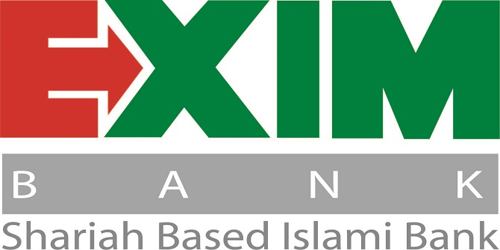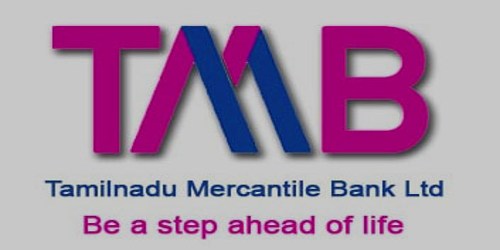CHAPTER 4:
PRIMARY EDUCATION IN BANGLADESH
4.1 Definition of Literacy
There has been a continuing debate on what constitutes literacy and how to define it. A UNESCO definition, “to read and write a simple statement on everyday life,” (UNESCO 1993) is popular but is not satisfactory to many. Paulo Freire, the Brazilian educator, viewed literacy as a process of “conscientization” which involves, in his words “reading the world” rather than just reading the “word” (Freire and Macedo 1987). A variety of definitions for literacy have been formulated and used by different countries at different times. Most have recognized in varying degree the functional and instrumental character of literacy in people’s life, going beyond the mechanics of “decoding” alphabet.
In fact, there is no one UNESCO definition or one that has gained common acceptance, because a meaningful and useful definition of literacy has to be specified to its social and cultural context. As early as in 1965, the World Conference of Ministers of Education on Eradication of Illiteracy held in Teheran concluded that:
Rather than an end in itself, literacy should be regarded as a way of preparing man [and woman] for a social, civic and economic role that goes far beyond the limits of rudimentary literacy training consisting merely in the teaching of reading and writing. The very process of learning to read and write should be made an opportunity for acquiring information that can immediately be used to improve living standards; reading and writing should lead not only to elementary general knowledge but to training for work, increased productivity, a greater participation in civil life and a better understanding of the surrounding world, and should ultimately open the way to basic human culture (UNESCO and UNDP 1976).
In the 1970s, the concept of “lifelong learning” got currency and was discussed at different forums. The UNESCO-appointed Faure committee Report of 1972 entitled Learning to Be made a passionate appeal to all nations of the world to reorganize their educational structures on two basic premises: first, that a learning society is one in which all agencies within a society become providers of education, and second, that all citizens should be engaged in learning, taking full advantage of the opportunities provided by the learning society (Faure 1972). Further impetus to the idea was provided in 1996 with the report by Delors et al, Learning the Treasure Within. Pronouncing the four pillars of education in the 21st century be learning to know, learning to do, learning to be, and learning to live together the Delors Report laid strong emphasis on renewal of knowledge, skills and learning abilities of individuals to adapt to the new environment. The report advocated the acquisition of a sound general education, learning throughout life, acting creatively in and on one’s own environment, acquiring occupational skills, and also moves broadly, being able to face rapid social change and work in teams (Delors et al 1996).
A number of statements from different sources, cited in the report of the Cambodian literacy assessment, shed light on the variations and nuances in the meanings of literacy and the characteristics of a literate person.
(Ministry of Education, Youth and Sports 2000)
- Literacy is a characteristic acquired by individuals in varying degrees from just above none to an indeterminate upper level. Some individuals are more literate or less literate than others, but it is really not possible to speak of literate and illiterate persons as two distinct categories (UNESCO 1957, cited in Oxenham 1980).
- A person is functionally literate when [s]/he has acquired the essential knowledge and skills which enable him [or her] to engage in all those activities in which literacy is required for effective functioning in his [or her] group and community, and whose attainments in reading, writing and arithmetic make it possible for him [or her] to continue to use these skills towards his [or her] own and the community’s development (UNESCO 19620, cited in Oxenham 1980).
- The concepts ‘functional literacy’ and functional illiteracy’ were introduced to distinguish the higher-order level of abilities that separate those who are barely able to read and write (‘functional illiterates’) from those who function effectively in community, and at home (‘functional literates”) (OECD 1992).
- Effective literacy is intrinsically purposeful, flexible and dynamic and involves the integration of speaking, listening and critical thinking with reading and writing (Dawkins 1991).
- What we call ‘writing’ need not always be defined by the Gutenberg tradition of script on paper which has been reproduced by the printing press. In a broader sense, writing is definable as any sort of meaningful inscription, and in the case of Aboriginal Australian (for example) this would include sand printings and drawings….body markings, printings as well as engravings on bark or stone (Davis et al 1990)
- The very notion of literacy has evolved; in addition to reading and writing and numeracy skills, people now also require technological and computer literacy, environmental literacy, and social competence. Educational institutions have a major role in preventing the social and economic exclusion, and cultural alienation, that can result from a lack of appropriate skills (OECD 1996).
- Literacy is part of the process by which illiterate people become aware of their personal situation – and learn to do something about improving it. Learning to read, write and count are steps towards achieving political, economic, cultural and human rights. This, in turn, enables people who learn to read to play a role in making their world a better place to live. Although literacy may not be the great panacea that leads to happiness and wealth, it could lead to change in the way power is distributed in society (Paolo Freire, cited in UNESCO 1991).
- A person is literate who can with understanding both read and write a short simple statement on his everyday life (UNESCO 1995).
(Source: Literacy in Bangladesh Need for a New Vision – Education Watch 2002)
4.2 BaCKGROUND of primary education in Bangladesh
Through history, Bangladesh has gone through various phases of education systems. From the time of the British rule to the Pakistani regime and finally the Bangladeshi system, education has evolved not only in methods but also in fundamental aspects like language and governance.
Under the British regime
From ancient times through the middle ages, the indigenous education system was predominant in the Indian subcontinent. The general population was completely alienated from what we can refer to as primary education. It was the British who modernized the education system.
The Wood’s Education Despatch of 1854 was a significant example of the efforts to the modernization of education by the British rulers in Bengal. According to its guidelines, a Department of Public Instruction was created in 1855-56. Several posts were created, with the highest rank of Director of Public Instruction. The Despatch also encouraged initiatives to establish private institutions.
Lord Kurzon also took some initiatives to expand primary education. In 1910, Gopal Krishna Gokhale passed a bill in the Law Council making primary education compulsory. The bill was rejected in 1912, but in 1912, a bill making primary education compulsory in the Municipal areas was passed.
With the provision of limited autonomy in the Indian Book Act of 1921, Bengal (Rural) Primary Education Act was enacted in 1930. For over a decade after this, there was hardly any follow up action. Under this act, District School Boards were set up to control, direct and manage the dissemination of education, to reach ultimately the goal of universal, compulsory and free education. Although primary education was controlled, directed and managed by the Director of Public Instruction, and the schools were inspected by the District, Subdivisions or Circle Offices (comprising one or more Thanas/Upazillas) the direct administrative responsibility laid solely with the Zilla (District) School Boards.
The Sergeant commission Report (1944), for the development of education was published after the Second World War. It was the first report to recognize pre-primary education. As the British rule ended in 1947, the Sergeant Commission Report remained unimplemented.
THE PAKISTAN PERIOD (1947-1971)
Soon after the partition of India, at the National Education Conference in 1947, a resolution to make education universal, compulsory and free was put forward. In 1957, the Government abolished the District School Boards and the management, control and administration of primary education were handed over to the District Primary Education Office. The former District Inspectors of Schools were appointed as Chief Executives of the office under the aegis of the deputy Commissioners.
The Bengal (Rural) Primary Education Act was amended in 1951. In order to make primary education compulsory, The Government then undertook an experiment to make primary education compulsory. In the selected unions, 5000 primary schools were selected to be run as “Compulsory Primary Schools”, and the rest were to operate as “Non-compulsory Primary Schools”. Primary education was made a five year course in the year 1952, before which it was a four year course.
As a result of the segmentation of the primary schools into “compulsory primary schools” and “non-compulsory primary schools”, dissatisfaction spread amongst the teachers. The Government, therefore, in 1957 renamed the 5000 Compulsory Primary Schools in the unions as “Model Primary Schools” and the rest as “Non-Model Primary Schools”. The Headmasters of the Model Schools could inspect and supervise the Non-Model schools.
In the First Five-Year Plan, universal access to education was given emphasis. The first Education Commission was set up in 1959. This Commission recommended that within the next fifteen years, primary education should be an eight year course, and liberal promotion on the basis of age should be introduced. In the Second and Third Five Year Plans, there were increased allocations for the development of primary education sub-sector to enhance facilities in the schools and to provide for increased student enrollment.
A section of parents, students, teachers, and educational authorities did not like the categorization of “Non-Model”, and the practice of inspection and supervision of the activities of Non-Model School Headmasters by the Model School Headmasters. In 1965, the government collectively termed Model and Non-ModelSchools as “Managed Free Primary Schools”. Under that scheme, all the primary schools were brought under one administration and the teachers received pay and allowances according to their qualifications.
THE BANGLADESH PERIOD (1971-PRESENT)
This period has started after the liberation of war of 1971. Soon after independence, primary education was written as a national responsibility of the state in the constitution. The process started in the last decade of the twentieth century. The changing status in five successive five-year plans can be noticed but the beginnings are to be traced back to the articles 15 and 17 of the Constitution (1972) and the clear recommendations of the Education Commission’s Report, 1974. Both these documents made primary education the responsibility of the government. In 1974, true to the provisions of the Constitution, the government issued a ‘Decree of Nationalisation’ of all 36,165 primary schools in the country. This was truly a landmark in the history of education. Since then, with every successive five-year plan, the allocation for primary education has increased steadily, both in the revenue and development parts of the annual budget. There are now an almost equal number of primary schools in the private sector; most of them in the rural areas, that enjoy considerable financial support of the government, short of full adoption as government institutions. Urban schools with a leaning toward English but complying generally with the curriculum nationally adopted does not as a rule depend on state support. There still remain a vast number of children of the school-going age who are out of school. A parallel stream of non-formal education, under the management of NGOs, has come into the picture in recent years. Also, international funding agencies the world Bank, Asian Development Bank, UNICEF and others have now emerged in Bangladesh as major partners in primary education. The list now includes IDA, DGIS, SIDA, NOFAD, UNDP, IOB, EU (EEC), OPEC, Saudi Arabia, Japan and Germany.
One factor that has contributed to the new importance being given to and the enhanced status being enjoyed by the sector is the international commitment to it. Bangladesh is committed to the goals set in the World Conference on Education for All held in Jomtein, Thailand in March 1990 and the World Summit on Children held in New York in September 1990. Bangladesh is also committed to implement the Summit Declaration on Education for All of Nine High Population Developing Countries held in Delhi in December 1993.
From 1947 onward, the main problem with primary education has been its tardy growth. At that point of time, for one village with a primary school there were four without any. Most of these schools were poorly housed; teachers were, most of them, poorly trained, and invariably poorly paid. The uphill task of lifting this whole sector to a reasonable level of efficiency rested with the government. But resources, when it came to education, especially primary education, were always scanty. From 1947 to 1972, that is the time when Bangladesh emerged as a truly independent country, primary education and the level of literacy of the country were both stuck in a state of prolonged stupor.
The new phase starting in 1972/73 with the governmentalization of over 36,000 schools did not produce miracles in terms of universalization of basic education. But the objective came to be better defined, with the publication of the Education Commission report of 1974. New strategies were proposed for achieving the goal of universal primary education. The Primary Education Act of 1981 made provisions for the establishment of Local Educational Authorities at the sub-divisional level. The move unfortunately proved abortive, mainly due to political uncertainty. Next, in 1990 came the Compulsory Primary Education Act. It empowered the government to undertake legal and administrative measures to implement the purposes of the CPE Act. After this, something like a concerted campaign has been initiated for eradication of illiteracy under projects that have brought the government and many development partners on the same platform. These projects comprehend both formal and non-formal primary education, the NGOs playing a significant role in the non-formal sector. It has been claimed officially that literacy rate now is somewhere between 50 and 60 percent. Also, as a result of the literacy drive initiated by district administrations, a number of districts have emerged, at least officially, as fully literate ones.
(Source: 1. Primary Education in Bangladesh – Ministry of Primary and Mass Education, Government of Bangladesh
2. Banglapedia – Bangladesh Asiatic Society)
4.3 CURRENT SITUATIONS of primary education in Bangladesh
The education system in Bangladesh is characterised by co-existence of three separate streams. The mainstream happens to be a vernacular based secular education system carried over from the colonial past. There also exists a separate religious system of education. Finally, based on use of English as the medium of instruction, another stream of education, modelled after the British education system, using the same curriculum, has rapidly grown in the metropolitan cities of Bangladesh.
However diverse the above streams may apparently look, they have certain common elements, and there exists scope for re-integration of graduates of one stream with the other at different levels.
The mainstream primary education system in Bangladesh is structured as follows: –
- One or two year pre-primary education imparted in private schools/kindergartens, and informally in government primary schools for six months.
- Five-year compulsory primary education for the 6-10 year age group, imparted mainly in government and non-government primary schools. In metropolitan cities, however, government and non-government primary schools cater to the educational needs only of the poorer sections of the people, as the better-off families usually send their children to Private English Medium schools/ secondary schools that run primary sections as well. There, however, exist a substantial number of NGO run non-formal schools catering mainly for the drop- outs of the government and non-government primary schools. Very few NGOs however impart education for the full 5-year primary education cycle. Because of that, on completion of their 2-3 year non-formal primary education in NGO run schools, students normally re-enter into government/ non-government primary schools at higher classes. NGO run schools differ from other non-government private schools. While the private schools operate like private enterprises often guided by commercial interests, NGO schools operate mainly in areas not served either by the government or private schools essentially to meet the educational needs of vulnerable groups in the society. They usually follow an informal approach to suit the special needs of children from the vulnerable groups.
According to statistical data, enrollment increased from 12.6 million in 1991 to 18.4 million in 1998. While the number of government primary schools remained unchanged at 38,000, no. of non-government primary schools increased from 12,000 to 26,000 over this period with 23,000 already receiving government recognition. The sharp increase in non-government schools has been primarily in response to meeting unmet needs for primary education, in the wake of enactment of Compulsory Primary Education Act in 1990 as local communities organised their own schools. NGOs also played an active role in promoting education in poor villages without schools.
The Fifth Five Year Plan (1997-2002) that accorded highest priority to primary education set a target of achieving gross enrolment rate of 110 percent, and net enrolment rate of 95 percent by the year 2002 ( Planning Commission, 1998). A nation wide survey conducted by CAMPE in 1998 revealed that although high level of gross enrolment rate had already been achieved (107 percent for both sexes-109 percent for girls and 104 percent for boys), net enrolment rate stood much behind, at 77 percent only (78.6 percent for girls and 75.5 percent for boys). Thus, in 1998, 23 percent of children, 6-10 years of age, did not have access to primary education. Marked regional variation in net enrolment rate was observed. With 82.6 percent net enrolment rate Khulna led while Chittagong lagged far behind with 74 percent (CAMPE-UPL, 1999). Net enrolment rate for slum children of Dhaka city was found to be only around 60 percent-considerably lower compared even to their rural counterparts (UNICEF 1998).
Enrollment rates varied significantly by socio-economic groups as well. A sizeable number of children from very poor households were never enrolled in primary schools, and many of those enrolled dropped out before completing the full five year cycle as their families depended on child labour for survival. Although there has been some reduction in drop out rate from 38 percent in 1995 to 35 percent in 1998, (Planning Commission, 2000) it still remains considerably high, and needless to mention that drop out rate is significantly higher amongst children from poorer households. According to the Primary Education Statistics in Bangladesh-2002, the dropout rate was found to be 32%. However, in another survey, the Education Watch National Literacy Survey 2002 states that the dropout rate was 50.3%. So, it is found that different surveys gave contradictory results.
In order to improve the access of children of poorer households to primary education, and also for reducing the drop out rate amongst them, in 1993-94, an innovative scheme called the Food for Education Programme that provides up to 15 kilograms of wheat to land less very poor households for sending their children regularly to schools was introduced in 460 economically and educationally backward Unions . By 1999-2000, its coverage expanded to 17403 schools in 1247 Unions benefiting 2.3 million students belonging to 2.2 million households (GOB, 2001). In the remaining 3208 Unions a stipend programme for students from the poorer households was introduced in April, 2000. Under this programme, the poorest 40 percent students are provided with a stipend valued at Tk. 25 per month. In FY 2000-2001, the programme benefited 3.2 million students at a cost of Tk. 1420 million.
The drop out rate came down to 35% in 1999. Repeater rate however remained quite high, at 38 percent. That means, on the average, a child needed 6.6 years to complete the 5-year primary education cycle. Attendance rate at 62 percent could hardly be called satisfactory.
Significant improvement in ‘quantity’ as indicated by increased enrolment rate, and reduced drop out rate were not however matched by improvement in ‘quality’. The objective of primary education being development of basic competencies i.e. learning (language and numeracy) and life skills (including values and attitude) amongst children so as to enable them effectively pursue further education/active and productive life in society, in order to throw light on quality of education received by children passing through the primary education they were assessed for basic competencies. The CAMPE Survey found that in 1998 only 29 percent of children could satisfy the minimum levels in all four competency areas, viz. reading, writing, numeracy, and life skills/knowledge. Compared to 27 percent in 1993, the above finding no doubt indicates to some improvement in the quality of primary education, but it still remained at a deplorably low level.
The CAMPE Survey found considerable regional variation in learning achievement, and also by gender, rural-urban residence, and type of schools. Boys performed better than girls. Children from urban areas did better than their rural counterparts. The level of basic education was the highest in Khulna, and lowest in Chittagong. Students studying in the primary section of secondary schools showed the best performance. It was also observed that with increase in the level of education, and economic status of parents that allowed access to private coaching and different types of communication, students’ performance directly varied.
The CAMPE Survey also found that although there has been some improvement in learning achievement of primary students over the period 1993-98, such improvement was confined to rural areas only as a declining trend was observed in the urban areas.
Limited number of contact hours-daily school time of 120 minutes for classes I- II, and 240 minutes for classes III-V; high student-teacher ratios increasing over time due to surge in enrolment; over crowding of class rooms; and poor motivation of teachers burdened with many non-academic and non school responsibilities assigned to them encroaching upon their limited school hours are some of the recognised causes of poor quality of primary education in Bangladesh.
(Source: Policy Brief On ‘Education Policy’ CPD Task Force Report – Centre for Policy Dialogue task force (August 2001))
4.4 BARRIERS OF PRIMARY EDUCATION
The major constraints to achieving universal primary education have been classified by the Government of Bangladesh as follows:
1. Physical constraints
- Want of school within accessible distances,
- Shortage of classrooms and overcrowding,
- Shortage of teachers particularly female teachers,
- Lack of proper teaching and learning aids,
- Shortage of furniture, fittings, other school supplies,
- Lack of playgrounds, water supply, satisfactory toilet facilities, particularly for girls,
- Lack of equipments and supplies for the students, especially proper clothes for girls.
2. Other constraints
- Lack of motivation, discipline and professional skill of teachers,
- Weak community involvement and lack of awareness and interest of parents, prejudices,
- Unattractive teaching/learning environment,
- Insufficient improvement in content, quality and relevance of education,
- Wastages, irregularities and inefficiency,
- Inadequacies in supervision and management,
- Poverty, poor health and nutrition and lack of preparedness for schooling and learning by students.
(Source: Education for All: National Plan of Action – Government of Bangladesh)
The different barriers to primary education as identified by the non-governmental organizations and researchers are as follows:
1. Lack of physical facilities
- The scarcity of classrooms is an acute problem for a large number of schools and is one of the major causes for operating schools on a staggered system.
- Furniture is inadequate in about one-third of schools. However, if student attendance were as it should be, the lack of furniture would pose a serious problem to two-thirds of schools.
- Almost all schools (96 percent) had toilet facilities but about one-half were found to be unclean or out of order.
- The majority of schools had sources of potable water. But one-fourth was found to be non-functioning due to lack of maintenance. The same was true for playgrounds.
2. Geographical factors
- A distance of more than 2km of the school from home was found to prevent female participation in primary education.
- During the rainy season, student attendance became very low.
3. Health
- Many rural children school hungry and this adversely affects their performance. The malnutrition of girls, their lower resistance to disease and their higher mortality rate are also obvious causes of concern.
4. Availability of Educational Materials
- Many schools in the survey (66 of 150), did no receive textbooks on time while many schools, mostly RNGPS (Registered Non Government Primary Schools), did not receive adequate numbers of books.
- The vast majority of schools do not possess the required teaching aids, and only a few have a limited number of teaching aids. There is a crisis of educational materials in schools. This is a serious problem in the RNGPS.
- The supply of Teachers’ Guides and educational materials from the system is neither regular nor even.
5. Human Resource Inputs
- The number of teachers in almost all schools is less than the number of grades/sections.
- The proportion of female teachers is less than male teachers in GPS and far less in RNGPS.
- Because of high student absenteeism, the teacher-student ratio calculated on the basis of daily attendance of children is favourable. However, if children attended regularly, the ratio would be very high.
- Field-lever officials visit the easily accessible schools most frequently, leaving others unvisited or seldom visited. Teachers are seldom provided professional assistance to improve their teaching during official visits.
6. Community Participation
- Although all schools have an SMC, SMC members participate in the developmental activities of the schools and provide material support in only 15% of the schools. Most SMC members confine themselves to attending SMC meetings and holding discussions.
- A few schools communicate with parents regularly, some do so occasionally, while others neither communicate with parents nor involve their community in school affairs.
7. Enrollment and Attendance of Children
- The average enrollment in GPS is considerably higher than in RNGPS. The average class size in GPS is considerably larger than that of RNGPS.
- The attendance rate of children is alarmingly low, In many schools, there is a tendency among teachers to mark more children present than are actually there.
8. Teacher’s Qualifications
- There exists inequality in teacher’s qualifications, academic and professional, in both GPS and RNGPS. The vast majority of the GPS teachers are trained while most RNGPS teachers are untrained.
- Teaching was not the first choice as a profession for a significant number of teachers, so many lack motivations.
9. Rewards and Punishment
- Giving corporal punishment, scolding children publicly and using demoralizing language are practiced in a considerable number of schools.
10. Teachers’ Qualities
- Some teachers are routinely irregular, and a good number are often late.
- An overwhelming majority of both RNGPS and GPS teachers were found to be unprofessional. They did not have a list of competencies for the subjects they teach or even lesson plans for their work. In addition, they did not correct the home task khata (copy books) of the children.
11. The Teacher-Student Relationship
- Quite a few teachers are warm, sympathetic and approachable. A considerable number, though, are neither warn nor unkind but are quite impassive. Others appear indifferent, practically ignoring the children.
12. Perceptions of Parents and Communities
- Some parents do not consider their schools safe and secure places for their children, while the majority thinks otherwise.
13. Educational Materials in the Classroom
- A serviceable chalkboard is available in one-half of the schools. The remainder either does not have a chalkboard or have an unusable one.
- Nearly all of the children in most of the schools had notebooks and pencils/pens with them. In some schools, a number of children did not have these materials.
14. Children in the Classroom
- The majority of children in the vast majority of the schools are lively, enthusiastic, neat and clean, and respectful of their teachers. A very few are timid or subdued. Some are in poor health, and some are short for their age.
- The majority of the children in some schools appeared to be attentive to the lessons, while the majorities in other schools were not attentive. To a large extent, student attentiveness depends upon the performance of their teachers.
15. Teachers in the Classroom
- Most of the teachers attend school with acceptable dress and keep themselves clean and neat. Their movement in the class is natural.
- Most of the teachers are behave politely with their students but some are terrifying to the children.
- The voice of the vast majority of the teachers is audible and normal. That of some teachers is feeble and inaudible. A few shout loudly.
- A few teachers encourage and motivate children whenever necessary; a few do so occasionally. The majority are oblivious to this need.
16. Curriculum Delivery
- The delivery of curriculum is a serious problem. There exists a wide gap between the curriculum itself and curriculum practice. The great majority of the teachers do not follow pre-specified competencies in presenting their lessons.
17. Involvement of Children in the Learning Process
- One-third of GPS and one-half of RNGPS teachers do not provide any scope for children to participate in the teaching-learning process. Others give scope to some children but this is limited to responding to questions, explaining pictures, or writing answers to quizzes. Learning through doing is completely absent; children are not involved in any creative or innovative activity.
18. Use of Teaching Aids and Chalkboard
- An insignificant number of teachers use teaching aids and illustrations. A few use them occasionally, but the majority does not.
- A few teachers use chalkboards at appropriate times. The majority seldom use them. Some teachers do not use chalkboards at all.
19. Use of the Question and the Answer Method
- The majority of the teachers ask the children to answer questions. But only a few of them do this routinely. The teachers ask direct, conventional, content-based questions.
20. Relating Lessons to Life Experiences
- The majority of teachers do not draw examples from the life experiences of the learners, do not relate lessons to real-life situations and confine themselves to the content provided in the text book.
21. Emphasis on Rote Memorization
- A good proportion of GPS and the vast majority of RNGPS teachers stress rote memorization even when concept formation strategies are necessary.
22. Diagnosis of Children’s Problems
- Only a few teachers try to diagnose the children’s problems and explain them carefully if they do not understand. Children are seldom given feedback on their performance.
23. Recognition of Children’s Views
- Except for a very few teachers, most do not provide any scope for children to express opinion on topics or issues during discussion.
24. The Classroom Environment
- The classroom environment in many schools is often dull. It is somewhat cordial, pleasant, and joyful in only about one-third of the classrooms ─ but not necessarily stimulating.
25. Assessment
- The vast majority of the teachers conduct formative assessment of their children through oral quizzes. About three-fourths use written quizzes in class. Most of the quizzes are content based and traditional in nature. About one-fourth of GPS and one-half of RNGPS children seemed not to have understood the lessons and cannot, therefore, be expected to achieve the intended competencies.
26. Homework
- The majority of the teachers give homework. A few discuss mistakes from the previous days work. Some teachers put their signature on the homework exercise books without checking and identifying mistakes.
27. Achievement of Pupils
- Within each division there is a wide range in the achievement of schools in each subject. A few schools performed relatively well on the tests while others performed quite poorly. The exception was mathematics achievement, which was quite poor for all divisions.
- Every school can be described by measuring its status on four factors: teaching and learning processes, school learning climate, enabling conditions, and supporting inputs from outside the school. These measurements can be used to show the differences among the schools’ qualities. These factors are related to how well a school achieves the goal of students learning the curriculum competencies. Teaching and learning processes and school climate are the factors most strongly related to achievement.
- The GPS are uniformly superior to the RNGPS in fifth-grade student achievement outcomes. Both types of schools did equally poorly in mathematics achievement.
28. Interactions of the C-H Factors with Achievement
- The multiple correlation of all factors and their interactions with achievement is 0.63, which is moderated. The C-H factors can explain about 41% of the variation in achievement among schools.
(Source: Primary Education in Bangladesh Findings of the PSPMP: 2000 –
Asian Development Bank)
Comparing the findings of the government with those of the NGO operated research works, it seems that there were many factors in the report of NGO operated investigations that were absent in the GOB report. The GOB reports emphasized mainly on their achievements like the increase in enrollment rates, completion rates, etc. Though the completion rates and retention rates have increased, they may be also be a consequence of the increase in population, which causes a consequent increase in the number of students. So in reality, the increase in completion and retention rates cannot be considered as huge successes. More importantly, despite the incentives taken by the government, the dropout rate always remained at a constant rate of about around 30%. If a child drops out from grade 2 or 3, he cannot be called literate because he would not be able to read simple sentences or do basic mathematics. So, the dropout rates command more importance as UPE cannot be achieved if dropouts persist.
The reports by the NGO operated investigations included many factors influencing dropout rates which were overlooked by the GOB reports. Some of those factors include the absence of an able leader for the teachers, lack of patronization towards extraordinarily gifted students, the irrelevance of the education curriculum from real-life experiences, etc. So these are some issues which the government needs to acknowledge.
Report on Primary School Dropouts The Reasons Behind an Anthropological Investigation [part-1]
Report on Primary School Dropouts The Reasons Behind an Anthropological Investigation [part-2]
Report on Primary School Dropouts The Reasons Behind an Anthropological Investigation [part-3]
Report on Primary School Dropouts The Reasons Behind an Anthropological Investigation [part-4]
![Report on Primary School Dropouts The Reasons Behind an Anthropological Investigation [part-2]](https://assignmentpoint.com/wp-content/uploads/2013/04/images-8.jpg)















